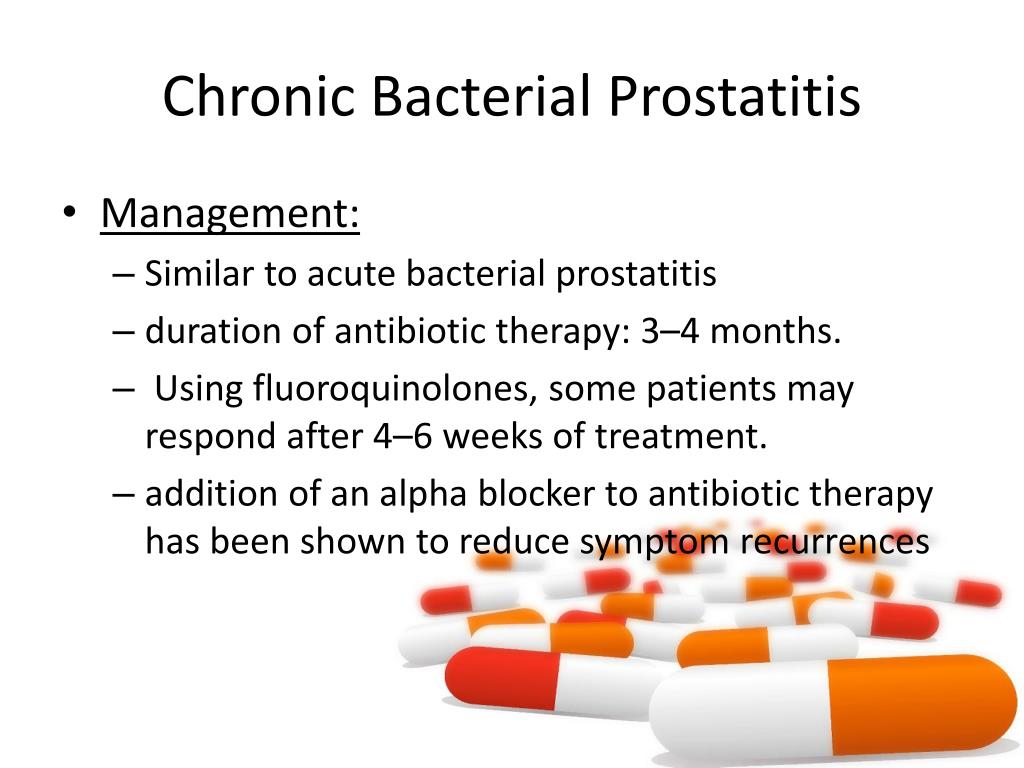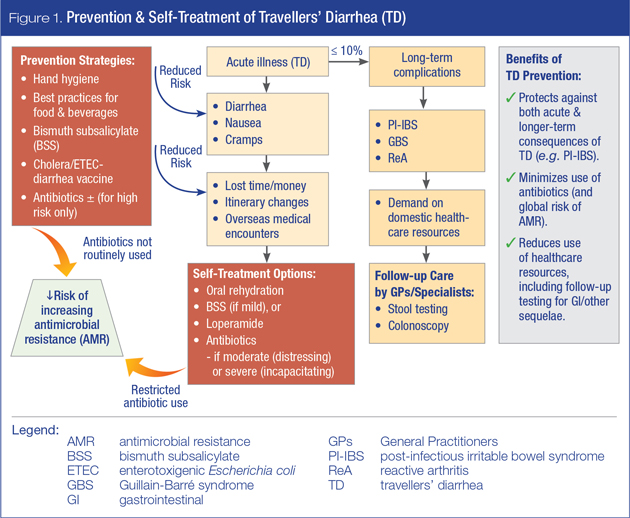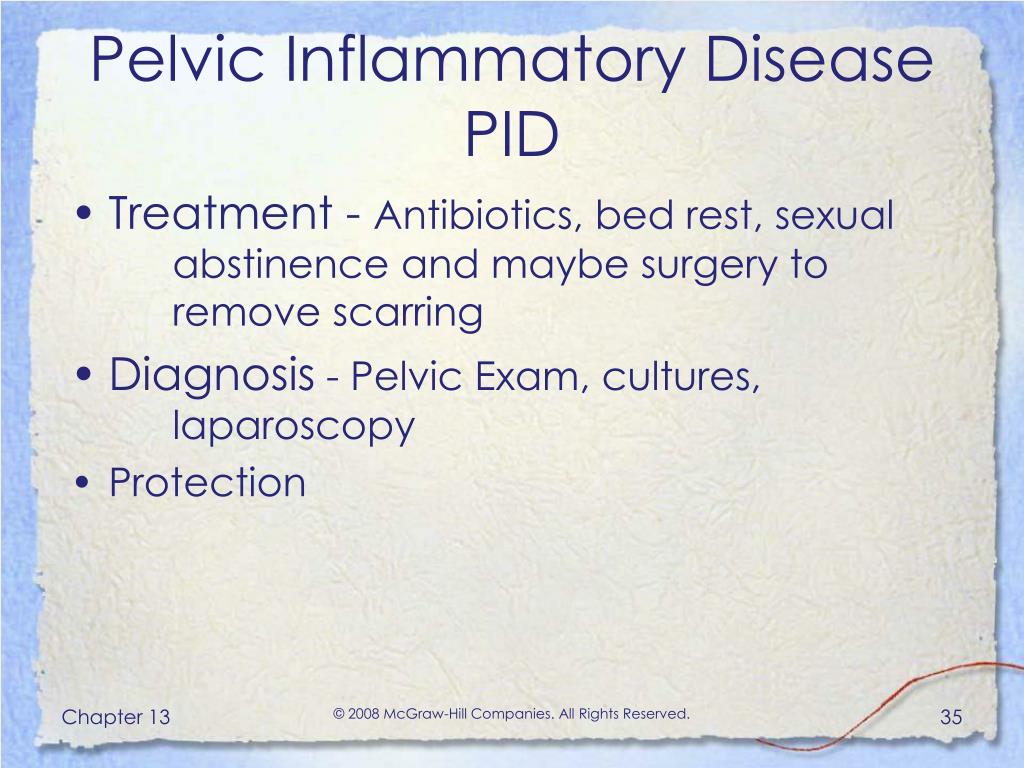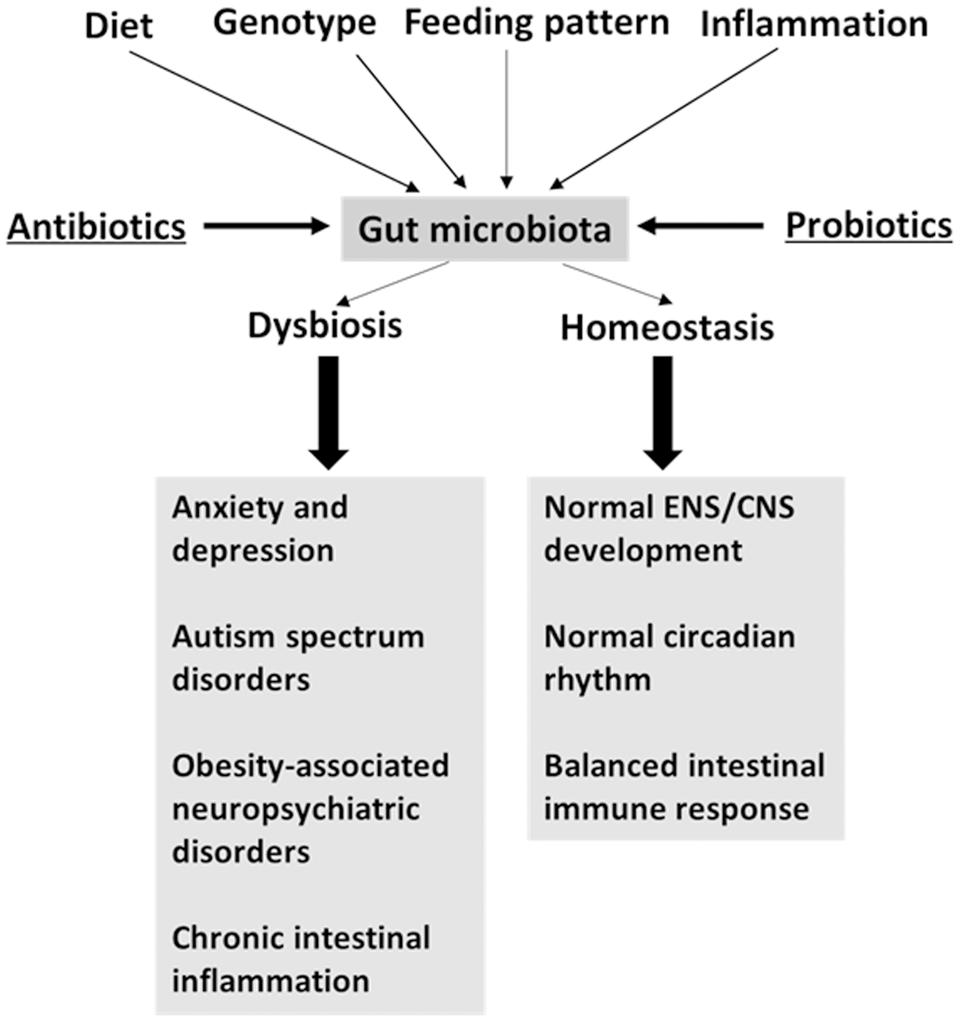Treatment antibiotics. Antibiotics: Understanding Their Mechanism, Uses, Side Effects, and Proper Usage
How do antibiotics work. What are the common uses of antibiotics. What are the potential side effects of antibiotic treatment. How should antibiotics be properly used to maximize effectiveness and minimize resistance.
The Mechanism of Action: How Antibiotics Combat Bacterial Infections
Antibiotics are powerful medications designed to fight bacterial infections. Their primary mechanism of action involves targeting specific components or processes within bacterial cells, ultimately leading to bacterial death or inhibition of growth. Understanding how antibiotics work is crucial for appreciating their importance in modern medicine.
Different classes of antibiotics employ various strategies to combat bacteria:
- Cell wall inhibitors (e.g., penicillins, cephalosporins) disrupt the formation of bacterial cell walls, causing the cells to burst.
- Protein synthesis inhibitors (e.g., tetracyclines, macrolides) interfere with the bacteria’s ability to produce essential proteins.
- DNA replication inhibitors (e.g., fluoroquinolones) prevent bacterial DNA from replicating, halting cell division.
- Metabolic inhibitors (e.g., sulfonamides) block crucial metabolic pathways in bacterial cells.
Can antibiotics differentiate between harmful and beneficial bacteria? While antibiotics are designed to target specific bacterial structures, they can often affect both pathogenic and beneficial bacteria in the body. This is why antibiotic use can sometimes lead to disruptions in the normal gut microbiome, potentially causing side effects like diarrhea.

Common Uses of Antibiotics: When Are They Prescribed?
Antibiotics are prescribed for a variety of bacterial infections, but it’s important to note that they are not effective against viral infections. Healthcare providers carefully consider several factors before prescribing antibiotics:
- Bacterial infections that are unlikely to clear up without intervention
- Infections that could potentially spread to others if left untreated
- Conditions where antibiotics can significantly speed up recovery
- Infections that carry a risk of serious complications
Do all infections require antibiotic treatment? No, many common infections, especially those caused by viruses, do not require antibiotics and will resolve on their own with proper rest and supportive care. Examples include:
- Common colds
- Flu
- Most sore throats
- Many cases of bronchitis
Specific Conditions Treated with Antibiotics
Antibiotics are commonly prescribed for bacterial infections such as:
- Strep throat
- Pneumonia
- Urinary tract infections (UTIs)
- Skin infections like cellulitis
- Bacterial ear infections
- Certain sexually transmitted infections (STIs) like chlamydia
Are there instances where antibiotics are used preventively? Yes, in some cases, antibiotics may be prescribed prophylactically to prevent infections. This is known as antibiotic prophylaxis and is typically reserved for specific situations such as:
- Before certain surgical procedures
- For individuals with weakened immune systems
- After animal bites or significant wounds
- For patients with specific medical conditions that increase infection risk
Antibiotic Side Effects: Understanding the Risks
While antibiotics are generally safe and effective when used appropriately, they can cause side effects in some individuals. It’s important to be aware of potential adverse reactions:

- Gastrointestinal disturbances (nausea, vomiting, diarrhea)
- Allergic reactions (ranging from mild rashes to severe anaphylaxis)
- Photosensitivity (increased sensitivity to sunlight)
- Disruption of the normal gut microbiome
- Yeast infections (due to the elimination of beneficial bacteria)
- Rare but serious effects like liver or kidney damage
How can the risk of antibiotic side effects be minimized? To reduce the likelihood of experiencing side effects, follow these guidelines:
- Take antibiotics exactly as prescribed
- Complete the full course of treatment, even if symptoms improve
- Inform your healthcare provider of any allergies or previous adverse reactions
- Avoid alcohol consumption during antibiotic treatment, unless approved by your doctor
- Be aware of potential drug interactions with other medications
Proper Antibiotic Usage: Maximizing Effectiveness and Minimizing Resistance
The appropriate use of antibiotics is crucial not only for individual treatment success but also for combating the global threat of antibiotic resistance. Here are key principles for proper antibiotic usage:

- Only take antibiotics prescribed by a qualified healthcare professional
- Follow the prescribed dosage and duration precisely
- Never share antibiotics with others or use leftover antibiotics from previous treatments
- Dispose of unused antibiotics properly
- Practice good hygiene to prevent the spread of infections
Why is completing the full course of antibiotics important? Finishing the entire prescribed course of antibiotics helps ensure that all targeted bacteria are eliminated. Stopping treatment prematurely can allow some bacteria to survive, potentially leading to the development of antibiotic-resistant strains.
The Threat of Antibiotic Resistance
Antibiotic resistance occurs when bacteria evolve to become less susceptible or completely resistant to specific antibiotics. This phenomenon poses a significant global health challenge, as it can lead to infections that are difficult or impossible to treat with existing medications.
How does antibiotic resistance develop? Several factors contribute to the development of antibiotic resistance:
- Overuse and misuse of antibiotics in healthcare and agriculture
- Incomplete antibiotic courses allowing bacteria to survive and adapt
- Lack of new antibiotic development
- Poor infection control practices in healthcare settings
Special Considerations: Antibiotics in Vulnerable Populations
Certain groups of people may be more susceptible to infections or require special consideration when it comes to antibiotic use. These vulnerable populations include:

- Elderly individuals (over 75 years old)
- Newborns (less than 72 hours old)
- People with chronic conditions like heart failure or diabetes
- Individuals with weakened immune systems (e.g., HIV patients, those undergoing chemotherapy)
- Pregnant women
- People with a history of antibiotic-resistant infections
How do healthcare providers approach antibiotic prescribing for these groups? When treating vulnerable populations, healthcare professionals carefully weigh the potential benefits of antibiotic therapy against the risks. They may:
- Choose antibiotics with lower risk profiles
- Adjust dosages based on age, weight, or kidney function
- Monitor patients more closely for potential side effects
- Consider alternative treatments when appropriate
The Future of Antibiotic Therapy: Emerging Trends and Research
As antibiotic resistance continues to pose challenges, researchers and pharmaceutical companies are exploring innovative approaches to combat bacterial infections. Some promising areas of research include:

- Development of new classes of antibiotics
- Combination therapies to enhance effectiveness
- Bacteriophage therapy (using viruses that infect bacteria)
- Immunomodulatory approaches to boost the body’s natural defenses
- Targeted delivery systems to improve antibiotic efficacy
What role does personalized medicine play in the future of antibiotic therapy? Advances in genomics and diagnostic technologies are paving the way for more personalized approaches to antibiotic treatment. This may include:
- Rapid diagnostic tests to quickly identify specific pathogens
- Genetic profiling to predict individual responses to antibiotics
- Tailored antibiotic regimens based on a patient’s microbiome composition
- Development of narrow-spectrum antibiotics to minimize disruption of beneficial bacteria
Antibiotic Stewardship: Promoting Responsible Use in Healthcare and Community Settings
Antibiotic stewardship refers to coordinated efforts to improve the appropriate use of antibiotics. These programs aim to optimize patient outcomes while minimizing the negative consequences of antibiotic use, such as resistance and side effects.

Key components of antibiotic stewardship include:
- Education for healthcare providers and the public
- Implementation of evidence-based prescribing guidelines
- Regular monitoring and reporting of antibiotic use and resistance patterns
- Use of rapid diagnostic tests to guide treatment decisions
- Promotion of non-antibiotic alternatives when appropriate
How can individuals contribute to antibiotic stewardship? Everyone has a role to play in promoting responsible antibiotic use:
- Don’t pressure healthcare providers for antibiotics when they’re not necessary
- Practice good hygiene to prevent the spread of infections
- Stay up to date on vaccinations to reduce the risk of bacterial infections
- Properly dispose of unused antibiotics
- Educate family and friends about the importance of appropriate antibiotic use
By understanding the mechanisms, uses, and proper administration of antibiotics, as well as the potential risks and global challenges associated with their use, we can work together to preserve the effectiveness of these life-saving medications for future generations. Responsible antibiotic use is not just a matter of individual health but a crucial step in addressing the global threat of antibiotic resistance.

Antibiotics – Uses – NHS
Antibiotics are used to treat or prevent some types of bacterial infections. They’re not effective against viral infections, such as the common cold or flu.
Antibiotics should only be prescribed to treat health problems:
- that are not serious but are unlikely to clear up without antibiotics – such as acne
- that are not serious but could spread to other people if not promptly treated – such as the skin infection impetigo or the sexually transmitted infection chlamydia
- where evidence suggests that antibiotics could significantly speed up recovery – such as a kidney infection
- that carry a risk of more serious complications – such as cellulitis or pneumonia
Learn about antibiotic resistance and why antibiotics are no longer routinely used to treat infections.
People at risk of bacterial infections
Antibiotics may also be recommended for people who are more vulnerable to the harmful effects of infection. This may include:
- people aged over 75 years
- babies less than 72 hours old who have a bacterial infection, or a higher than average risk of developing one
- people with heart failure
- people who have to take insulin for diabetes
- people with a weakened immune system – either because of an underlying health condition such as HIV or as a side effect of certain treatments, such as chemotherapy
Antibiotics to prevent infection
Antibiotics are sometimes given as a precaution to prevent, rather than treat, an infection. This is called antibiotic prophylaxis. Situations where antibiotics are given as a preventive treatment include:
This is called antibiotic prophylaxis. Situations where antibiotics are given as a preventive treatment include:
- if you’re having an operation
- after a bite or wound that could get infected
- if you have a health problem that means you’re at higher risk of infection, such as if you’ve had your spleen removed or you’re having chemotherapy treatment
If you’re having an operation
Antibiotics are normally recommended if you’re having a type of surgery that carries a high risk of infection.
For example, you may be prescribed antibiotics if you’re going to have:
- some types of eye surgery – such as cataract surgery or glaucoma surgery
- joint replacement surgery
- breast enlargement surgery
- pacemaker surgery
- surgery to remove the gallbladder
- surgery to remove the appendix
Your surgical team will be able to tell you if you need antibiotics.
Bites or wounds
Antibiotics may be recommended for a wound that has a high chance of becoming infected – this could be an animal or human bite, for example, or a wound that has come into contact with soil or faeces.
Medical conditions
Some people are particularly vulnerable to infection, making antibiotics necessary. They include:
- people who have had their spleen removed
- people having chemotherapy for cancer
- people with sickle cell anaemia
In some cases, antibiotics are prescribed for people who have an infection that keeps coming back or that’s causing distress or an increased risk of complications, such as:
- cellulitis
- urinary tract infections
- genital herpes
- rheumatic fever
Page last reviewed: 11 November 2022
Next review due: 11 November 2025
Antibiotics | Johns Hopkins Medicine
What are antibiotics?
Antibiotics are powerful medicines used to treat certain illnesses. However, antibiotics do not cure everything, and unnecessary antibiotics can even be harmful.
However, antibiotics do not cure everything, and unnecessary antibiotics can even be harmful.
There are 2 main types of germs that cause most infections. These are viruses and bacteria.
Viruses cause:
Antibiotics cannot kill viruses or help you feel better when you have a virus.
Bacteria cause:
Antibiotics do kill specific bacteria.
Some viruses cause symptoms that resemble bacterial infections, and some bacteria can cause symptoms that resemble viral infections. Your healthcare provider can determine what type of illness you have and recommend the proper type of treatment.
What are resistant bacteria?
Each time you take an antibiotic, bacteria are killed. Sometimes, bacteria causing infections are already resistant to prescribed antibiotics. Bacteria may also become resistant during treatment of an infection. Resistant bacteria do not respond to the antibiotics and continue to cause infection. A common misconception is that a person’s body becomes resistant to specific medicines. However, it is the bacteria, not people, that become resistant to the medicines.
However, it is the bacteria, not people, that become resistant to the medicines.
Each time you take or give your child an antibiotic unnecessarily or improperly, you increase the chance of developing medicine-resistant bacteria. Therefore, it is critically important to take antibiotics only when necessary. Because of these resistant bacteria, some diseases that used to be easy to treat are now becoming nearly impossible to treat.
Bacteria can develop resistance to certain medicines:
Medicine resistance happens when bacteria develop ways to survive the use of medicines meant to kill or weaken them.
If a germ becomes resistant to many medicines, treating the infections can become difficult or even impossible.
Someone with an infection that is resistant to a certain medicine can pass that resistant infection to another person. In this way, a hard-to-treat illness can be spread from person to person.

In some cases, the antibiotic-resistant illness can lead to serious disability or even death.
Resistance can happen if the bacterial infection is only partially treated. To prevent this, it is important to finish taking the entire prescription of antibiotics as instructed, even if your child is feeling better.
When are antibiotics needed?
This complicated question, which should be answered by your healthcare provider, depends on the specific diagnosis. For example, there are several types of ear infections—most need antibiotics, but some do not. Most cases of sore throat are caused by viruses. One kind, strep throat, diagnosed by a lab test, needs antibiotics.
Common viral infections, like coughs or a cold, can sometimes become complicated and a bacterial infection can develop. However, treating viral infections with antibiotics in order to prevent bacterial infections is not recommended because of the risk of causing bacterial resistance:
Remember that antibiotics do not work against viral colds and the flu, and that unnecessary antibiotics can be harmful.

Talk with your healthcare provider about antibiotics and find out about the differences between viruses and bacteria, and when antibiotics should and should not be used.
If your child receives an antibiotic, be sure to give it exactly as prescribed to decrease the development of resistant bacteria. Have your child finish the entire prescription. Don’t stop when the symptoms of infection go away.
Never save the left over antibiotics to use “just in case.” This practice can also lead to bacterial resistance.
Do not share your antibiotics with someone else or take an antibiotic that was prescribed for someone else.
Antibiotic resistance is a problem in both children and adults.
Remember that taking antibiotics appropriately and making sure your child receives the proper immunizations will help prevent having to take more dangerous and more costly medicines. Talk with your healthcare provider for more information.
Talk with your healthcare provider for more information.
how to drink antibiotics correctly and not harm your health
June 2, 2022
How to take antibiotics correctly and without harm to health is a serious issue, so we strongly recommend that you consult a doctor and do not prescribe the drug yourself.
In the article we will analyze:
Why is it so important to take antibiotics only when prescribed by a doctor and in the prescribed dosage;
What rules should be strictly followed when taking antibiotics;
Why the misuse of antibiotics can harm the body.
What are the dangers of taking antibiotics rashly?
Self-administration of antibiotics without a doctor’s prescription can not only harm health, but also complicate the healing process. The whole point is in such a concept as resistance, which carries a danger both for the patient and for humanity in a global sense.

Resistance is the development of microbial resistance to an antimicrobial agent. Treatment with antibiotics in this case is not always effective.
Why is this happening?
The action of the antibiotic is aimed at the destruction of pathogenic microorganisms that cause the disease (not viruses). If the rules for taking antibiotics are not followed (reducing the dosage, duration of the course), bacteria can survive and adapt to new conditions, that is, become resistant. Then the treatment of the patient is much more difficult:
the doctor has to select other means to overcome the disease;
the recovery process is delayed, which means that the load on the excretory organs is growing;
useful intestinal microflora is lost, which will need to be restored;
antimicrobial treatment next time may be less effective.
The problem is also large-scale: bacteria can adapt to a new drug, becoming even stronger and gradually evolving into “superbugs” that are not destroyed by any antibiotic known to date.
 Once in a weakened body, they can carry a great danger. There is already the first U.S. victim who succumbed to the superbug Klebsiella pneumoniae (source).
Once in a weakened body, they can carry a great danger. There is already the first U.S. victim who succumbed to the superbug Klebsiella pneumoniae (source).To prevent the development of resistance, you need to know how to drink antibiotics correctly.
What not to do while taking antibiotics
Self-treatment. People often prescribe antibiotics to themselves in order to recover more quickly, even without knowing the nature of the disease. Antimicrobial drugs help only with a bacterial origin of the ailment. Such remedies are powerless against viruses (however, a doctor may prescribe an antibiotic if a bacterial infection develops against a viral background).
For effective treatment, make an appointment with a therapist.
Stop taking the drug if you feel better. This is a common mistake: the patient gets better, and he stops taking the antibiotic, so as not to “poison himself once again.
 ” However, improvement in well-being often occurs at a time when the bacteria are just beginning to weaken, but their complete destruction is still far away. Such weakened bacteria can become resistant after discontinuation of the drug.
” However, improvement in well-being often occurs at a time when the bacteria are just beginning to weaken, but their complete destruction is still far away. Such weakened bacteria can become resistant after discontinuation of the drug.Violation of the dosage and duration of the antibiotic indicated by the doctor also contributes to the development of antibiotic resistance of microorganisms.
Rules for taking antibiotics
So, we highlight the main rules for taking antibiotics for adults and children:
- Take antibiotics only as directed by your doctor. The specialist will be able to tell if you really need to take antimicrobials.
- Get a bacterial culture for antibiotic susceptibility for better treatment. The results of this analysis will help the doctor choose the right drug.
- Observe dosage. Reducing the dosage of the drug may lead to the fact that not all pathogenic bacteria will die.

- Strictly observe the appointment time. It is necessary to take the antibiotic at the same time in order to constantly maintain the concentration of the drug in the blood. For example, if you are prescribed to take the medicine once a day, the next dose should be taken 24 hours after the previous one. If 2 times a day – after 12 hours.
- Do not stop taking antibiotics if you feel better. As mentioned above, feeling better does not mean getting better. Most likely the infection has weakened, but not completely disappeared.
- Take the tablets with water and drink plenty of fluids . It is not recommended to drink antibiotics with milk, dairy products, tea, coffee and juices. You should drink more water to quickly remove the infection from the body.
- If you feel that the treatment is not working, contact your doctor before your scheduled appointment. The doctor may prescribe a different dosage, or a different drug.

- Record any antibiotics you take. This can be very useful on your next visit to the doctor. Record what drugs, for what diseases, in what dosages you have taken before, whether there were any side effects. This is especially true for children.
- Take probiotics. They will help to avoid side effects (diarrhea, flatulence, intestinal discomfort). Take a probiotic 2 hours before/after taking an antibiotic. This interval will protect beneficial bacteria from the antibiotic.
- Remember to check the expiration date of antibiotics . Do not take expired medicines.
FAQ
How long can antibiotics be taken?
The drug must be taken strictly according to the doctor’s prescription, without reducing or increasing the duration and dose of administration.
What is the correct way to give antibiotics to children?
Only a pediatrician can tell a child how to take an antibiotic correctly.
 It is better to take a bacterial culture in order to select the medicine as accurately as possible. Save all information about the treatment to simplify the selection of the drug for diseases in the future.
It is better to take a bacterial culture in order to select the medicine as accurately as possible. Save all information about the treatment to simplify the selection of the drug for diseases in the future.Is it possible to drink antibiotics for prevention?
You can drink an antibiotic for prevention only in special cases, as directed by a doctor.
Can antibiotics and antivirals be taken at the same time?
You can take drugs at the same time only as prescribed by a doctor. Such an appointment can be obtained with the development of a bacterial infection against a viral background.
Can I drink alcohol while taking antibiotics?
Not worth it. Can I drink alcohol while taking antibiotics? By itself, alcohol does not affect the effectiveness of the drug. However, this combination gives a double toxic effect on the body, especially the liver and kidneys. It won’t help a weakened immune system.

How long can I drink alcohol after taking antibiotics?
After a course of antibiotics and the fight against the disease, the body is weakened (especially due to the increased load on the liver and kidneys), at least several weeks are needed to recover.
Can I take two antibiotics at the same time?
Taking two antibiotics at the same time gives a double blow to the weakened body and intestinal microflora. You can take two drugs only as prescribed by a doctor in special cases.
Why does the temperature not drop when taking antibiotics?
This may occur due to an incorrectly selected drug or a violation of the dosage, the time of taking the drug. If the state of health does not improve for a long time, you need to consult a specialist.
Can the temperature rise when taking antibiotics?
Yes, it can be caused by an “endotoxic reaction”. It occurs due to the release of endotoxins, which appear during the destruction of bacteria, into the blood.
 The body may react with chills, fever. However, the reasons may be different, if you feel worse after starting antibiotics, see your doctor.
The body may react with chills, fever. However, the reasons may be different, if you feel worse after starting antibiotics, see your doctor.Can I get vaccinated after taking antibiotics?
A course of antibiotics before vaccination may result in fewer antibodies being produced in response to the immunization. It is better to wait with the vaccine until the end of the course of treatment.
Can taking antibiotics cause a delay in menstruation?
A shift in the menstrual cycle can occur, but rather due to the stress transferred by the body (in the form of an infection and fighting it.) If the delay is large or there are other reasons for concern, consult a gynecologist, because the disease could exacerbate previously hidden problems.
Is it possible to donate blood after taking antibiotics?
It is possible, but not earlier than 10-14 days after the end of the medication. Otherwise, the results of the analyzes may be distorted.

Share
Back
whether they help with influenza and SARS, what and when to take
During the epidemic of colds, everyone is in a hurry to stock up on antibiotics. However, if used incorrectly, they can be harmful to health. In the article, we understand whether antibiotics are needed for colds, why they are prescribed for ARVI and other viral infections, and why self-medication is dangerous.
How antibiotics work
Antibiotics are antibacterial drugs. They affect the metabolic processes of bacteria and disrupt protein synthesis. This prevents reproduction and stops the growth of the colony (bacteriostatic effect) or leads to the death of the pathogenic microbe (bactericidal effect).
Does an antibiotic help with a cold
In medicine, the common cold most often means SARS – respiratory diseases that are caused by viruses. Pathogenic viruses are fundamentally different from bacteria, fungi and other microorganisms.
 This is a cell-free entity that is not able to carry out metabolism and reproduce on its own.
This is a cell-free entity that is not able to carry out metabolism and reproduce on its own.The virus is an absolute parasite: it uses host cells for all life processes. Outside a living organism, it is a collection of crystals consisting of protein molecules, which does not show signs of vital activity. And when the viral part (virion) is introduced into a living cell, it begins to replicate, that is, to reproduce many of its own copies.
Since the virus does not synthesize protein on its own, the antibiotic has no effect on it. Therefore, it is useless to use antibacterial drugs for an uncomplicated viral infection. In such cases, antiviral agents are effective – their active substances prevent the penetration of the virus into the cell and replication.
When to take antibiotics for a cold
If antibiotics do not help against viruses, why do doctors prescribe them? Such an appointment is justified if:
● A cold has a bacterial nature, for example, a patient has streptococcal tonsillitis 1 .

● Both viruses and bacteria are involved in the infection at the same time – this is called a mixed infection.
● A bacterial infection joins the disease caused by a virus. This process is called superinfection. The protective barrier of the affected tissues is weakened, and they become vulnerable even to opportunistic microbes that are safe for a healthy person. This is a common complication of the common cold – it develops in the range of 4-66% 2 cases.
To accurately determine the pathogen, it is necessary to conduct laboratory tests – PCR analysis and bacteriological culture . But they take time to carry out, and treatment is usually needed now. Therefore, patients with mild ARVI are prescribed antiviral drugs and local antiseptics that act on all microbes, without tests.
According to the new clinical guidelines of the Ministry of Health of the Russian Federation 3 , published in February 2022, the priority group of drugs for the treatment of acute respiratory viral infections are direct antiviral drugs aimed at the cause of the disease.
 A new drug of this type is enisamia iodide (Nobasit ® Forte). The active substance – enisamia iodide – blocks the penetration of the virus into the cell and limits its spread in the body 4 . The results of clinical studies have shown that taking enisamium iodide reduces the number of complications requiring antibiotic therapy by 4 times. It also reduces the risk of infection spreading to the lower respiratory tract 5 .
A new drug of this type is enisamia iodide (Nobasit ® Forte). The active substance – enisamia iodide – blocks the penetration of the virus into the cell and limits its spread in the body 4 . The results of clinical studies have shown that taking enisamium iodide reduces the number of complications requiring antibiotic therapy by 4 times. It also reduces the risk of infection spreading to the lower respiratory tract 5 .If the patient has purulent discharge or the condition has improved, and then worsened again, then antibacterial agents will be useful. Without analyzes, only 9 can be used0258 local forms of antibiotics – as part of nasal drops, sprays.
According to the clinical recommendations of the Ministry of Health, antibiotics for ARVI systemically (in the form of tablets, suspensions, injections) are prescribed only in the following cases :
● The development of acute tonsillitis against the background of a severe or moderate cold.

● Attachment of sinusitis, laryngitis, tracheitis, bronchitis. If the infection is mild, then even if it spreads beyond the upper respiratory tract, it is not recommended to use antibiotics earlier than 10–14 days.
● Development of pneumonia.
In all these cases, it is recommended to first refer the patient for analysis in order to confirm a bacterial infection and select the most effective antibiotic 3 .
How to take antibiotics correctly
To recover quickly and not harm the body, take antibiotics correctly:
● Buy a drug prescribed by a doctor from a pharmacy. The prescription usually lists the active ingredient, but if your doctor recommends a certain brand name, you should heed the advice. Not all medicines with one active substance act in the same way – it depends on the quality of raw materials, adherence to production technology, and auxiliary components.
● Follow the dosage and intervals indicated in the prescription or prescription sheet, even if they differ from the instructions in the package leaflet.
 The fact is that the instructions present average values, and the doctor selects the regimen and doses individually, guided by the state of your health. If you take an antibiotic more often or more than you need to, it will increase your risk of unwanted side effects. If you reduce the dose or forget to take the medicine on time, the bacteria will adapt, and the treatment will be useless – this antibiotic will have to be replaced with another one.
The fact is that the instructions present average values, and the doctor selects the regimen and doses individually, guided by the state of your health. If you take an antibiotic more often or more than you need to, it will increase your risk of unwanted side effects. If you reduce the dose or forget to take the medicine on time, the bacteria will adapt, and the treatment will be useless – this antibiotic will have to be replaced with another one.● The interval between antibiotic doses should be the same. If the doctor has prescribed to drink tablets three times a day, then they should be taken every 8 hours, and not for breakfast, lunch and dinner with a long night break.
● Ask your doctor or read the directions for when to take your antibiotic. Some drugs need to be taken before meals, they are poorly absorbed into the blood on a full stomach. Others should be taken after meals to prevent gastrointestinal side effects.
● Most medications should only be taken with plain water unless directed otherwise.
 Juice, tea, coffee, mineral water can reduce the effectiveness of the antibiotic. And their combination will create an environment that irritates the mucous membrane of the digestive tract.
Juice, tea, coffee, mineral water can reduce the effectiveness of the antibiotic. And their combination will create an environment that irritates the mucous membrane of the digestive tract.● Do not split or crush the tablet before taking it, do not pour the powder from the capsule. The protective film prevents the destruction of the active substance by caustic gastric juice. If you find it difficult to swallow a large tablet, you can buy the same antibiotic in a lozenge or suspension form. It is worth remembering that such forms contain more auxiliary components that can cause allergies or increase blood glucose in a diabetic.
● Avoid alcohol during treatment. Many drugs do not interact well with alcohol (even if you drink a glass much later or earlier than the medication).
● Protect your digestive organs and kidneys. Taking medication creates an additional burden on the organs, so during the period of treatment, try not to overeat, do not eat a lot of fried, fatty, smoked.
 Replace fast food with homemade food.
Replace fast food with homemade food.● Do not stop taking the antibiotic if you feel better quickly and the doctor has prescribed a weekly course. To finally defeat the infection, the antimicrobial drug must be taken as much as the doctor prescribed.
If within three days of antibiotic therapy the condition does not improve or even worsens, consult a doctor, but do not change the drug yourself. Medical attention should be sought immediately if a skin rash, upset stool, headache, swelling, or other side effects appear on the background of an antibiotic.
What antibiotics to drink for SARS
An antibacterial agent for ARVI is prescribed by a general practitioner, otolaryngologist, pulmonologist. It is better to choose a drug according to the results of the analysis. The best way to find out which antibiotic the causative agent of the infection is most sensitive to is to do a bacteriological culture. The disadvantage of this analysis is a long wait: usually the results are ready only after 3-7 days.
 PCR is prepared much faster – from 24 hours, but the analysis does not show the sensitivity of a particular infectious agent to drugs.
PCR is prepared much faster – from 24 hours, but the analysis does not show the sensitivity of a particular infectious agent to drugs.If it is impossible to perform the analysis or there is no time to wait for the results for a long time, the doctor will prescribe an antibiotic, focusing on the most likely pathogens for a given localization of the infection.
Groups of antibiotics that are most often used for ARVI 6 :
● Semi-synthetic penicillins. For mild acute bacterial infections, amoxicillin is used, for moderate and chronic forms, amoxicillin / clavulanate.
● III-IV generation cephalosporins – ceftriaxone, ceftazidime, cefoperazone, cefepime – are used for chronic moderate and purulent infections.
● Macrolides – azithromycin, clarithromycin. They are used for allergies to penicillins.
● III-IV generation fluoroquinolones – levofloxacin, moxifloxacin. They replace antibiotics of the penicillin group in case of inefficiency.

Most drugs are available in the form of tablets (capsules), powders for suspension and injections. In outpatient practice, tablets and suspensions are more often used.
Why self-treatment is dangerous
Inappropriate antibiotic treatment can be harmful to health:
● Uncontrolled use of antibiotics increases the resistance of pathogenic microbes to them. If you abuse them for minor infections, they will most likely not help if you have a serious illness.
● Antibiotics often cause allergic reactions up to Quincke’s edema.
● A drug that you take without the knowledge of a doctor, in combination with medicines prescribed by a doctor, may give unpredictable results.
● Antibacterial drugs also kill the beneficial microflora of the body, which can lead to digestive disorders and gynecological inflammation.
● An additional unnecessary drug increases the load on the body and delays recovery.
How to avoid antibiotics
A bacterial infection requiring antibiotic treatment is a frequent continuation of a viral infection, its complication.
 The less tissues and the immune system are depleted by the virus, the lower the risk of developing such a scenario. From the first symptoms of SARS, start taking antiviral drugs. Especially effective are specific, directly acting on the virus. With colds and flu, enisamium iodide has proven itself well. This drug acts against most ARVI pathogens, facilitates the course of the disease, speeds up recovery and significantly reduces the risk of bacterial complications.
The less tissues and the immune system are depleted by the virus, the lower the risk of developing such a scenario. From the first symptoms of SARS, start taking antiviral drugs. Especially effective are specific, directly acting on the virus. With colds and flu, enisamium iodide has proven itself well. This drug acts against most ARVI pathogens, facilitates the course of the disease, speeds up recovery and significantly reduces the risk of bacterial complications.In order to prevent the development of a bacterial infection in ARVI, it is also important to facilitate nasal breathing and prevent sputum stagnation. To do this, drip vasoconstrictor drugs into the nose, in case of poor sputum separation, drink sputum thinners and expectorants, do inhalations.
Treat a viral infection in a timely manner, eliminate nasal congestion, facilitate coughing – this helps many to avoid taking antibiotics.
Historical note
In the middle of the twentieth century, antibiotics made a real revolution in medicine.
 Translated from Greek, their name means “against life” (“anti” and “bios”), but they only destroy bacteria. During the history of their existence, they have saved millions of new human lives.
Translated from Greek, their name means “against life” (“anti” and “bios”), but they only destroy bacteria. During the history of their existence, they have saved millions of new human lives.Thanks to antibiotics, people:
● Significantly reduced maternal and child mortality rates in obstetrics, and later successfully introduced assisted reproductive technologies (IVF and others).
● We were able to cure previously incurable fatal and crippling diseases: tuberculosis, leprosy, syphilis and others.
● Learned how to perform the most complex operations without the fear of getting almost inevitable purulent-inflammatory complications.
Introduction of the first antibacterial drugs
Scottish bacteriologist Alexander Fleming is considered the “father” of antibiotics. During the experiments, he noticed: if you place different cultures of microbes next to each other, some begin to actively destroy others. In particular, fungi Penicillium notatum , which accidentally got into a Petri dish with cultures of staphylococci and streptococci, stopped the growth of these harmful bacteria.

The scientist undertook to investigate the mold and in 1929 isolated the first antimicrobial substance from it – penicillin . Animal experiments have shown promising results. Fleming’s assistant, who fell ill with purulent sinusitis, voluntarily tested the drug on himself and quickly felt a significant improvement in well-being. However, the scientist failed to develop technologies for the industrial production of the antibiotic.
This was done by the pathologist Howard Florey and the biochemist Ernst Chain. In early 1941, Flory managed to interest industrialists and the US government in the production of a new drug. By the end of 1942, the first large batch was released, marking the beginning of the era of antibiotics. After another 10 years, these drugs became available everywhere, thanks to a significant reduction in the cost of technology and the launch of new production facilities.
The world praised the merits of scientists: in 1945, Fleming, Flory and Chain were awarded the Nobel Prize for the discovery of penicillin and its therapeutic effect against infections.
 At 19In 1952, the Nobel Prize for the discovery of the anti-tuberculosis antibiotic streptomycin was received by an American microbiologist (formerly our compatriot) Zelman Waksman. 7
At 19In 1952, the Nobel Prize for the discovery of the anti-tuberculosis antibiotic streptomycin was received by an American microbiologist (formerly our compatriot) Zelman Waksman. 7 Modern realities
Today in Russia, about 30 groups of antibiotics are actively used, which include drugs of different origin:
● Natural (biosynthetic) – Derived from fungi or bacteria that are resistant to antibiotics.
● Semi-synthetic – natural substances modified by an enzymatic or chemical method. Such drugs are more effective.
● Synthetic – created artificially in the laboratory.
There are broad-spectrum antibiotics that act on many types of bacteria, and narrow-spectrum antibiotics that selectively destroy a small group of them. Until recently, they worked almost flawlessly. Now a serious global problem is antibiotic resistance – the resistance of microorganisms to drugs. Bacteria, like any living organism, learn to adapt to adverse conditions.
 8.9
8.9 Briefly about the main
➢ Antibiotics are antimicrobials that help fight bacterial infections.
➢ Antibacterial drugs are ineffective for any viral infection, including SARS.
➢ Antimicrobial drugs are connected to the treatment of acute respiratory viral infections if a bacterial infection is present along with a viral infection. She can join later.
➢ Take antibiotics only as directed by your doctor. Self-medication leads to unwanted side effects and increases the resistance of microbes to the drug.
Bibliography:
1 Maltseva G.S., Grinchuk O.N., Place of antibiotic therapy for streptococcal infection // Medical Council – 2019.
2 Sviryaeva E.N., Korneev K.V., Drutskaya M.S., Kuprash D.V. Mechanisms of restructuring the immune response in viral-bacterial coinfections of the respiratory tract // Biochemistry – V. 81, No. 11, 2016.
3 Clinical recommendations of the Ministry of Health of the Russian Federation: Acute respiratory viral infections (ARVI) in adults
4 Instructions for medical use (Nobasit® Forte, film-coated tablets 500 mg; RU: LP-006416 dated 20.





 Once in a weakened body, they can carry a great danger. There is already the first U.S. victim who succumbed to the superbug Klebsiella pneumoniae (source).
Once in a weakened body, they can carry a great danger. There is already the first U.S. victim who succumbed to the superbug Klebsiella pneumoniae (source). ” However, improvement in well-being often occurs at a time when the bacteria are just beginning to weaken, but their complete destruction is still far away. Such weakened bacteria can become resistant after discontinuation of the drug.
” However, improvement in well-being often occurs at a time when the bacteria are just beginning to weaken, but their complete destruction is still far away. Such weakened bacteria can become resistant after discontinuation of the drug.

 It is better to take a bacterial culture in order to select the medicine as accurately as possible. Save all information about the treatment to simplify the selection of the drug for diseases in the future.
It is better to take a bacterial culture in order to select the medicine as accurately as possible. Save all information about the treatment to simplify the selection of the drug for diseases in the future.
 The body may react with chills, fever. However, the reasons may be different, if you feel worse after starting antibiotics, see your doctor.
The body may react with chills, fever. However, the reasons may be different, if you feel worse after starting antibiotics, see your doctor.
 This is a cell-free entity that is not able to carry out metabolism and reproduce on its own.
This is a cell-free entity that is not able to carry out metabolism and reproduce on its own.
 A new drug of this type is enisamia iodide (Nobasit ® Forte). The active substance – enisamia iodide – blocks the penetration of the virus into the cell and limits its spread in the body 4 . The results of clinical studies have shown that taking enisamium iodide reduces the number of complications requiring antibiotic therapy by 4 times. It also reduces the risk of infection spreading to the lower respiratory tract 5 .
A new drug of this type is enisamia iodide (Nobasit ® Forte). The active substance – enisamia iodide – blocks the penetration of the virus into the cell and limits its spread in the body 4 . The results of clinical studies have shown that taking enisamium iodide reduces the number of complications requiring antibiotic therapy by 4 times. It also reduces the risk of infection spreading to the lower respiratory tract 5 .
 The fact is that the instructions present average values, and the doctor selects the regimen and doses individually, guided by the state of your health. If you take an antibiotic more often or more than you need to, it will increase your risk of unwanted side effects. If you reduce the dose or forget to take the medicine on time, the bacteria will adapt, and the treatment will be useless – this antibiotic will have to be replaced with another one.
The fact is that the instructions present average values, and the doctor selects the regimen and doses individually, guided by the state of your health. If you take an antibiotic more often or more than you need to, it will increase your risk of unwanted side effects. If you reduce the dose or forget to take the medicine on time, the bacteria will adapt, and the treatment will be useless – this antibiotic will have to be replaced with another one. Juice, tea, coffee, mineral water can reduce the effectiveness of the antibiotic. And their combination will create an environment that irritates the mucous membrane of the digestive tract.
Juice, tea, coffee, mineral water can reduce the effectiveness of the antibiotic. And their combination will create an environment that irritates the mucous membrane of the digestive tract. Replace fast food with homemade food.
Replace fast food with homemade food. PCR is prepared much faster – from 24 hours, but the analysis does not show the sensitivity of a particular infectious agent to drugs.
PCR is prepared much faster – from 24 hours, but the analysis does not show the sensitivity of a particular infectious agent to drugs.
 The less tissues and the immune system are depleted by the virus, the lower the risk of developing such a scenario. From the first symptoms of SARS, start taking antiviral drugs. Especially effective are specific, directly acting on the virus. With colds and flu, enisamium iodide has proven itself well. This drug acts against most ARVI pathogens, facilitates the course of the disease, speeds up recovery and significantly reduces the risk of bacterial complications.
The less tissues and the immune system are depleted by the virus, the lower the risk of developing such a scenario. From the first symptoms of SARS, start taking antiviral drugs. Especially effective are specific, directly acting on the virus. With colds and flu, enisamium iodide has proven itself well. This drug acts against most ARVI pathogens, facilitates the course of the disease, speeds up recovery and significantly reduces the risk of bacterial complications. Translated from Greek, their name means “against life” (“anti” and “bios”), but they only destroy bacteria. During the history of their existence, they have saved millions of new human lives.
Translated from Greek, their name means “against life” (“anti” and “bios”), but they only destroy bacteria. During the history of their existence, they have saved millions of new human lives.
 At 19In 1952, the Nobel Prize for the discovery of the anti-tuberculosis antibiotic streptomycin was received by an American microbiologist (formerly our compatriot) Zelman Waksman. 7
At 19In 1952, the Nobel Prize for the discovery of the anti-tuberculosis antibiotic streptomycin was received by an American microbiologist (formerly our compatriot) Zelman Waksman. 7  8.9
8.9 